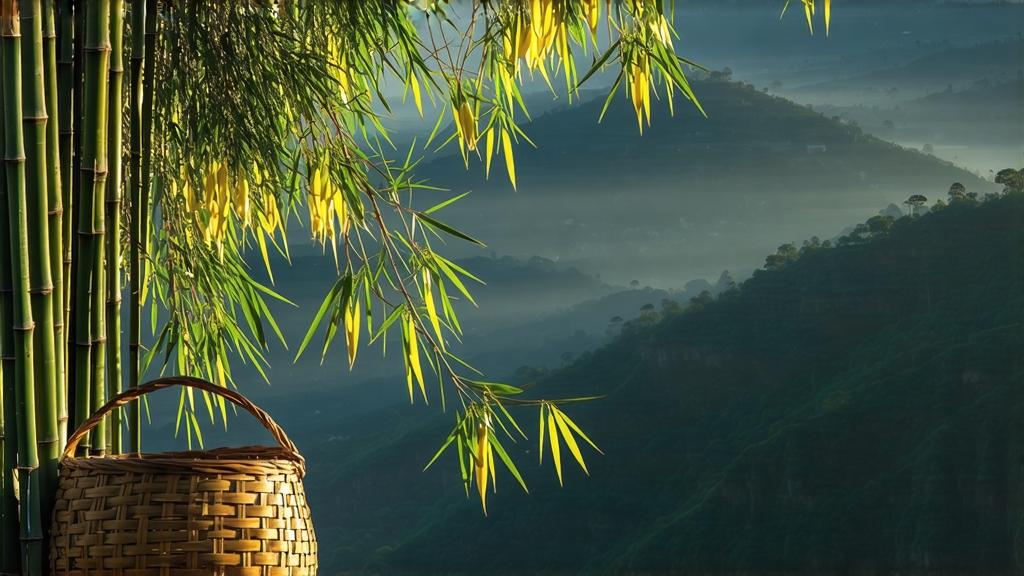
Tucked high above the Sichuan basin, where the Himalayas begin their gentle eastward descent, lies Meng Ding Mountain, the legendary first garden of Chinese tea. It is here, among cloud-veiled ridges and mineral-rich soils, that Meng Ding Huang Ya—literally “Meng Ding Yellow Bud”—has been coaxed into existence for more than twelve centuries. Unlike the better-known green teas of neighboring hills, this yellow tea carries a whispered history of imperial craving, secretive yellowing rooms, and a flavor so velvety that Song-dynasty poets described it as “drinking the moonlight off a silk sleeve.”
Historical scrolls kept in the mountain’s Ganlu Temple record that monk Wu Lizhen planted seven tea bushes on the summit in 53 BCE, presenting the earliest spring buds to Emperor Xuan of Han. By the Tang dynasty (618-907 CE) the tea had become an official tribute, carried 1,400 km north by fast horse to Chang’an within seven days of plucking. The Qing court later codified its picking standard: “one bud, one newly unfurled leaf, before the Qingming festival,” a rule still observed today. Such regal attention vanished during the turmoil of the early twentieth century; the technique survived only because three elderly monks continued to process a few kilos each spring for temple offerings. Rediscovered in 1959 by provincial tea scientists, Meng Ding Huang Ya was revived as one of China’s Ten Famous Teas, yet annual production remains below three tons, ensuring its cult status among connoisseurs.
Botanically, the cultivar is a local variant of Camellia sinensis var. sinensis known as “Ganlu Zhong,” distinguished by unusually small buds densely covered in white down. The bushes grow between 800 m and 1,400 m elevation, where diurnal temperature swings of 10–15 °C slow metabolism, concentrating amino acids. Spring mists filter UV light, yielding higher theanine and lower catechins—chemical precursors to the tea’s hallmark sweetness and low astringency.
Crafting Meng Ding Huang Ya is a choreography of heat, moisture, and patience collectively called “sealed yellowing” (men huang). Picking begins before dawn on days when mountain humidity hovers at 85 %; dew-laden buds are laid into shallow bamboo baskets lined with hemp cloth to prevent bruising. Within two hours they undergo “sha qing” (kill-green) in woks heated to 140 °C for exactly 90 seconds—just long enough to denature polyphenol oxidase while preserving the downy hairs. The leaves are then rolled for four minutes under a pressure of 0.6 kg cm⁻² to rupture 30 % of cell walls, initiating a slow release of juices.
What follows is the critical yellowing phase that distinguishes the category. The rolled leaves are wrapped in double layers of yellow cotton paper, then stacked inside cedar boxes lined with wet goat-skin. Held at 32 °C and 75 % relative humidity for 48 hours, the bundles are unwrapped every twelve hours to aerate and re-moisten. During this interval chlorophyll degrades into pheophytin, catechins dimerize into theaflavins, and a faint maillard note reminiscent of toasted pumpkin seed emerges. Finally the tea is gently dried over charcoal embers at 50 °C for three hours, reducing moisture to 5 % while allowing residual enzymes to continue mellowing the cup. The entire process spans five days and demands an experienced eye: under-yellowed leaves remain green and grassy; over-yellowed ones flatten into dull cocoa.
Finished Meng Ding Huang Ya appears slim and slightly curved, the color a muted olive-gold flecked with silvery tips. Aroma from the dry leaf is subtle—think fresh lilies, steamed rice, and a trace of wet stone. Once brewed, the liquor glows like pale chardonnay, releasing layered fragrances that oscillate between honeysuckle and roasted chestnut. On the palate it is almost weightless at first, then expands into a creamy umami reminiscent of white miso, finishing with a cool menthol lift that invites another sip. Professional cuppers often note a “three-stage sweetness”: initial fructose, mid-palate maltose, and a lingering stevia-like afterglow that persists for twenty minutes.
To unlock these nuances, water must be soft, low in minerals, and just off the boil—85 °C is ideal. Use a tall glass